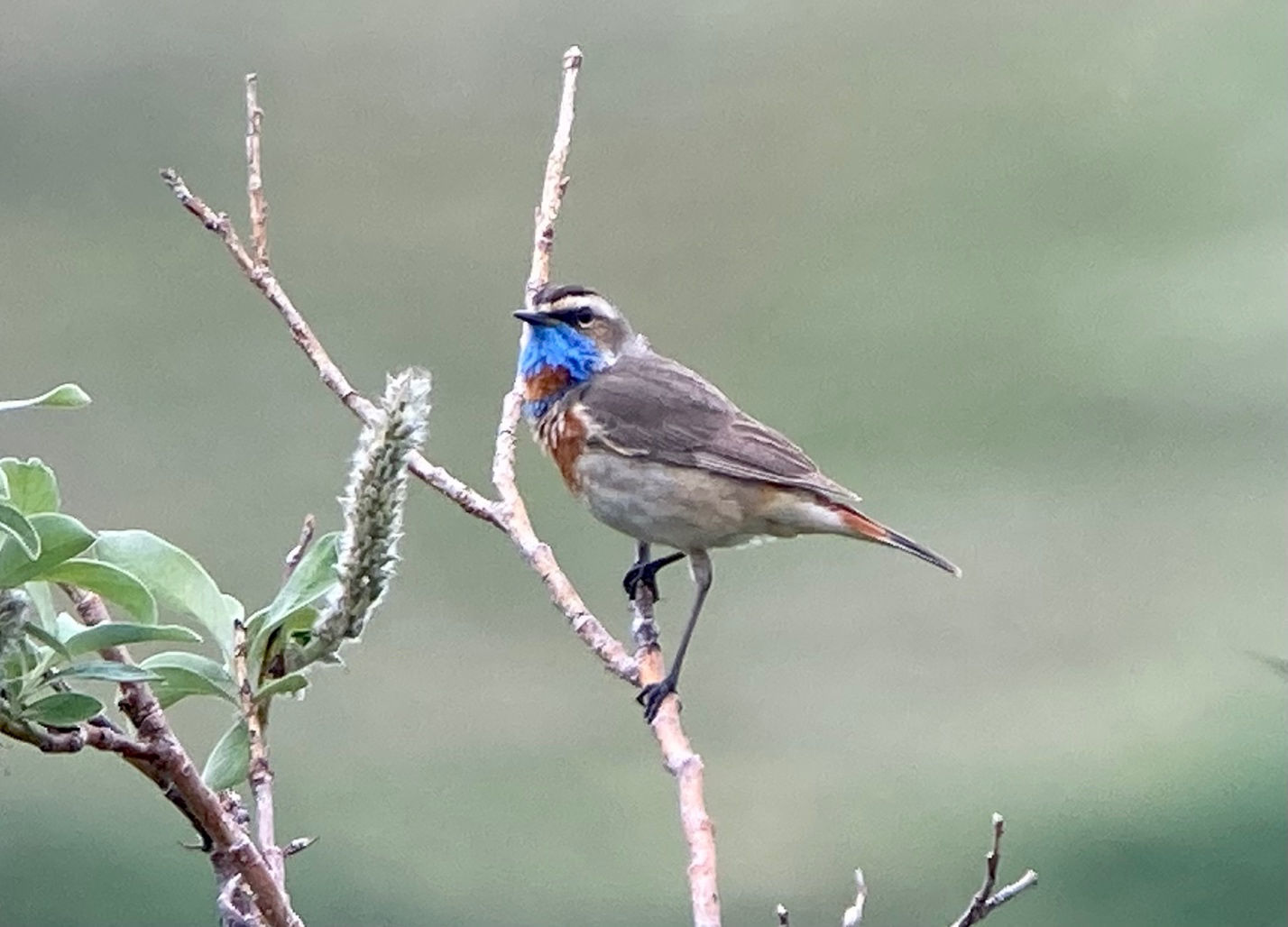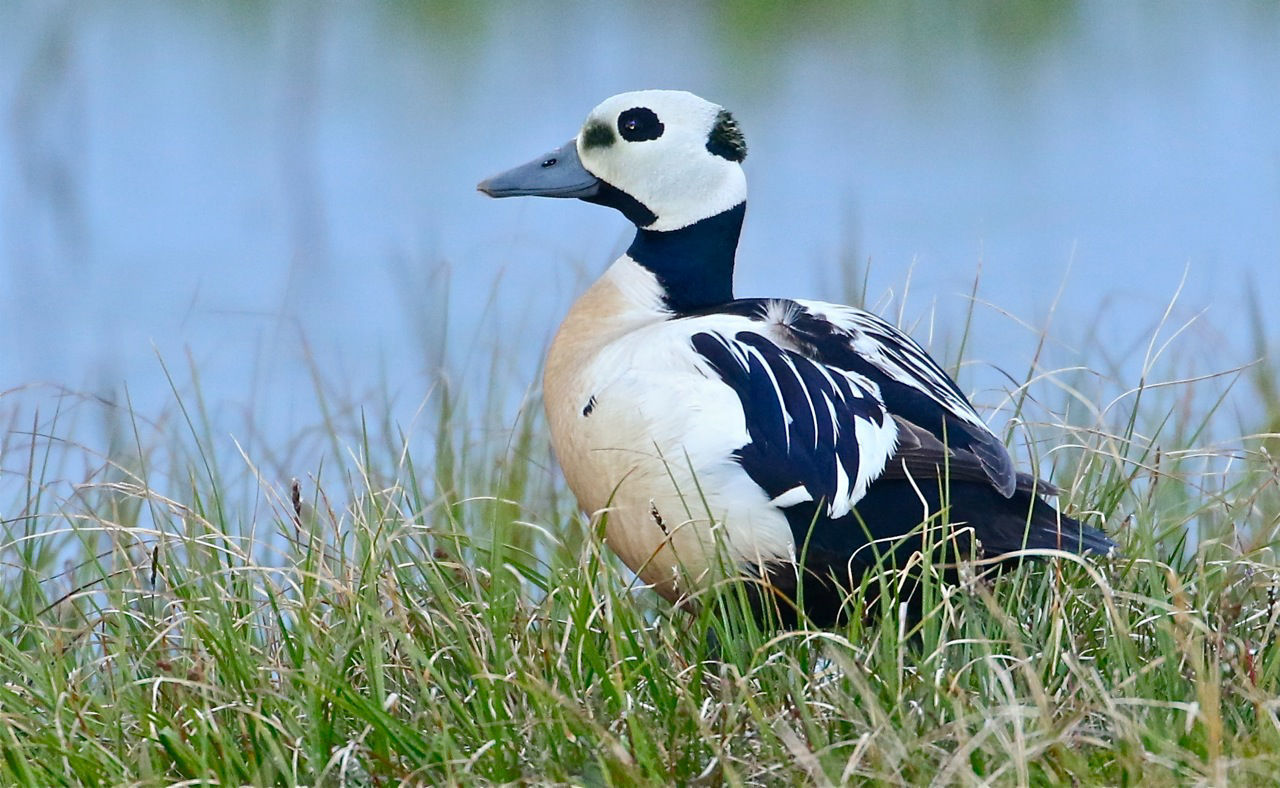Toll Free: 800.328.8368
Phone: 512.328.5221
Grand Alaska Part I: Nome & Utqiagvik (Barrow)
Upcoming Dates
June 7 - 16, 2026
Departs
Anchorage
Returns
Anchorage
Tour Limit
10
Itinerary
Read More
Bluethroat © Barry Zimmer
Set amidst some of the finest scenery on the planet (particularly Part II), participants can expect exhilarating birding through the forests, tundra, and coasts of one of the world’s truly elite destinations. Focus on all Alaskan specialty birds and mammals, with possibility of Siberian vagrants at Nome and Utqiagvik (Barrow). Divided into two sections to allow participants greater scheduling flexibility. Part I visits Nome and Utqiagvik, where the focus is on the tundra-breeding specialties of northern Alaska, while Part II covers Anchorage, the Kenai Peninsula, and the Denali region, where the emphasis is on the southern coast, and the boreal forest and taiga-muskeg habitats of the interior.
Part I of our Grand Alaska trip focuses on the tundra regions of northern Alaska, and offers some of the most exciting birding to be found on the North American continent. After overnighting in Anchorage, we’ll head straight to the gold-rush capital of Nome. Here, we may find a Slaty-backed Gull from Siberia loafing on the town waterfront, or migrating Yellow-billed Loons flying right past our hotel. Regal pairs of Harlequin Ducks ride the rapids of the many rivers while Wandering Tattlers teeter along the gravel shores. Aleutian and Arctic terns, gulls, and Bar-tailed Godwits and other shorebirds gather in impressive numbers at the Nome River mouth and Safety Sound, as elegant Long-tailed Jaegers patrol the adjacent tundra. The hills inland from Nome provide nest sites for lordly Gyrfalcons, as well as for their principal prey—Rock and Willow ptarmigan.
Traveling still farther inland, we should be treated to the exuberant flight songs of the dazzling male Bluethroat and, with luck, views of the rare and iconic Bristle-thighed Curlew. Our three-and-one-half days here should give us ample time to explore all three roads leading out of Nome, as well as the myriad microhabitats that harbor an impressive diversity of breeding birds ranging from alpine nesting Northern Wheatears, Golden-crowned Sparrows, Surfbirds, and Red Knots, to willow-lined river basins patrolled by Northern Shrikes and ringing with the songs of warblers, sparrows, and Rusty Blackbirds. Mammal viewing is typically excellent as well, with Muskox, Moose, and Grizzly (Brown Bear) among the frequently seen possibilities.
Utqiagvik (Barrow) is an entirely different world! In a setting of 24-hour sunlight, the bird life is unmistakably High Arctic. Three species of eiders nest here (the magnificent King, the beautiful Steller’s, and the bizarre Spectacled), with the males resplendent in their breeding dress, and there is no more accessible place in all of North America to see them.
Displaying sandpipers are everywhere—Pectorals with their ruffs distended as they perform their strange hooting flights, dressy Dunlins singing shrill “songs” from atop moss-covered hummocks, and ponds alive with gorgeous Red and Red-necked phalaropes. In some years, leks of wing-flashing Buff-breasted Sandpipers are also to be found. Brilliant Snow Buntings and Lapland Longspurs are the common passerines! Yellow-billed Loon, Red-necked Stint, and Sabine’s Gull are regular migrants that are seen in some years by our groups, and there is always the very real chance of some Asiatic vagrant showing up (vagrants seen on our past visits have included Temminck’s Stint, Gray-tailed Tattler, Spoon-billed Sandpiper, and Ross’s Gull). If the lemming population is not in a crash year, we should be treated to the sight of Snowy Owls and Pomarine Jaegers cruising over the tundra. Even Polar Bear (seen by several of our past tours) is a possibility here!
Good accommodations; easy to moderate terrain; easy, short walks with one optional hike (for Bristle-thighed Curlew) at Nome involving difficult terrain; internal flights to Nome and Utqiagvik (Barrow); mostly long days in the field at Nome (typically with picnic lunches and late dinners); other days with early dinner followed by optional post-dinner birding (primarily at Utqiagvik); generally cold (Utqiagvik and often Nome) to mild (sometimes Nome) climate.

Steller's Eider © Kevin Zimmer
Price: $8,635
Internal flights included.
Book This TourIf you don't want to book online, click here
Departure Dates
Route Map
Tour Leaders
Field Reports
Available by request; please contact the VENT office.
Connecting Tours
Operations Manager

Erik
Lindqvist
Questions? Contact the Operations Manager or call 800.328.8368 or 512.328.5221




